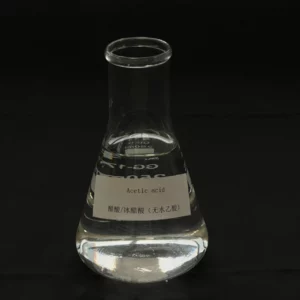They are defined by their ability to donate protons (H+ ions) in aqueous solutions, leading to an increase in the concentration of hydronium ions (H3O+) in the solution. Acids can be categorized into various types based on their strength, concentration, and chemical properties. Here are some key points about acids:

- Acidic Properties: Acids typically exhibit the following properties:
- They have a sour taste (e.g., citric acid in lemons).
- They can turn blue litmus paper red, indicating their acidic nature.
- They react with certain metals to produce hydrogen gas.
- They react with bases to form water and a salt in a chemical reaction known as neutralization.
- They have a pH value less than 7 when dissolved in water.
- Classification of Acids:
- Binary Acids: These acids are composed of two elements, hydrogen (H) and a non-metal. For example, hydrochloric acid (HCl) is a binary acid.
- Oxoacids: These acids contain hydrogen, oxygen, and a central non-metal atom. Examples include sulfuric acid (H2SO4) and nitric acid (HNO3).
- Carboxylic Acids: These organic acids contain the carboxyl group (-COOH) and are commonly found in organic compounds. Examples include acetic acid (CH3COOH) and citric acid.
- Mineral Acids: These are strong inorganic acids, such as sulfuric acid (H2SO4), hydrochloric acid (HCl), and nitric acid (HNO3). They are often used in industrial processes.
- Strength of Acids: Acids can be categorized as strong or weak based on their ability to ionize in water:
- Strong Acids: These acids ionize completely in water and release all their hydrogen ions. Examples include hydrochloric acid (HCl) and sulfuric acid (H2SO4).
- Weak Acids: These acids only partially ionize in water, leading to the equilibrium between the undissociated acid and its ions. Examples include acetic acid (CH3COOH) and carbonic acid (H2CO3).
- Concentration: The concentration of an acid in a solution is typically expressed in terms of molarity (moles of acid per liter of solution). Strong acids tend to have high molarity.
- Applications: Acids are used in various applications, including:
- Chemical Synthesis: They are used in the synthesis of other compounds.
- Industrial Processes: Strong acids are used in various industrial processes, such as refining metals and producing chemicals.
- Household Products: Some acids are found in household products like cleaning agents and food preservatives.
- Biological Functions: Acids play essential roles in biological systems, such as in the stomach’s gastric acid (hydrochloric acid) for digestion.
It’s important to handle acids with care, as many of them can be corrosive and harmful to living organisms and materials. Proper safety precautions and protective equipment should be used when working with acids.